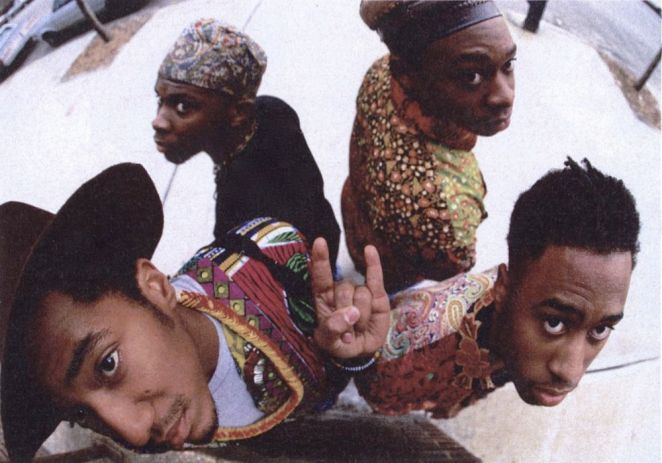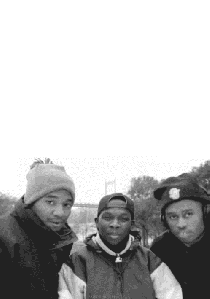Documentary: Dior and I (2014), directed by Frederic Tcheng
I decided to watch Dior and I because I was sick in bed and thought it would require little brain power. It is indeed easy to watch, but very much surprised me with the emotional punch it packed. It had much more heart than your average fashion documentary (which I often find a bit sterile, though interesting), and beyond being an insightful look into a famous design house with an iconic history, it reminded me that fashion is not at all frivolous but holds the power to inspire, awe, and ultimately to shape culture. The documentary covers the period of time in which the Belguin designer Raf Simmons – who previously designed minimalist clothing for Jil Sander – took over as head designer at Dior in 2012. If you have any interest in fashion, you may remember the fashion show that had each room covered floor to ceiling in walls of fresh flowers. It’s been burned into my memory since I first saw pictures 5 years ago, though I couldn’t remember the clothing that was in the show. Watching them construct those walls in the documentary made me literally cry, it was so beautiful. Even though I wouldn’t call myself obsessed with Dior designs by any means, I consider it a testimony to the quality of the film that I was so wrapped up in the process of designing Raf Simmon’s first show.
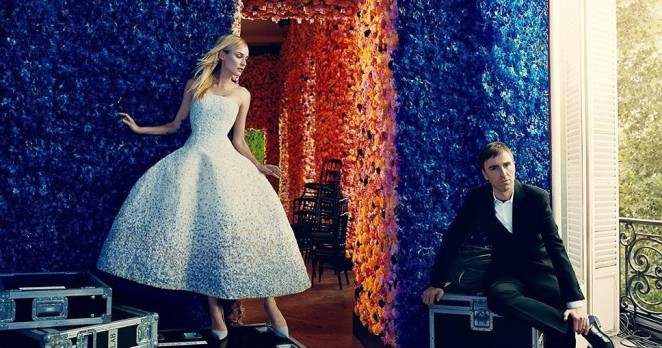
I often feel a bit guilty for the amount of time I spend thinking about or looking at fashion because it seems kind of airy and “not real life”, but Dior and I reminded me that the best sort of fashion is an art form that is very practical and pulls together the threads of history, tradition, craftsmanship, community, innovation, perseverance, and joy. Again, if you are at all interested in fashion, you’ve probably seen how Alassandro Michelle’s recent takeover of Gucci has ignited a new level of excitement about fashion and inspired many other brands (including Dior) to go in a whimsical direction that I find myself preening over as some reflection of at least part of my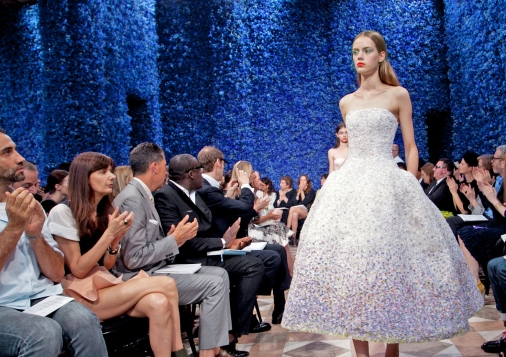 generation. Dior and I got me wondering why I ever gave up on being involved in the fashion industry on some level – it renewed my sense of it being a worthwhile contribution to society. As a side note, if you happened to read Flowers for Mrs. Harris by Paul Gallico that I reviewed in a previous batch, you will find special warmth in putting modern images from this documentary to all the word pictures in that book.
generation. Dior and I got me wondering why I ever gave up on being involved in the fashion industry on some level – it renewed my sense of it being a worthwhile contribution to society. As a side note, if you happened to read Flowers for Mrs. Harris by Paul Gallico that I reviewed in a previous batch, you will find special warmth in putting modern images from this documentary to all the word pictures in that book.
— Karissa Tucker
Audiobook: The Truth According to Us by Annie Barrows
 I drive a lot for work, so I’ve gotten the opportunity to discover the world of audio books. I’ve only listened to a few, but this was by far my favorite. The story of Macedonia, a small town with non-conspiratorial skeletons in the closet, is one of laughter, tragedy, and the uneventfulness of a small town during the depression. Miss Beck, daughter of a senator, is sent to Macedonia on a works project from the government during the
I drive a lot for work, so I’ve gotten the opportunity to discover the world of audio books. I’ve only listened to a few, but this was by far my favorite. The story of Macedonia, a small town with non-conspiratorial skeletons in the closet, is one of laughter, tragedy, and the uneventfulness of a small town during the depression. Miss Beck, daughter of a senator, is sent to Macedonia on a works project from the government during the
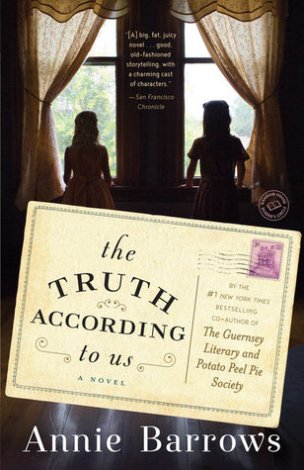
depression. Sent against her will to this backcountry community, she falls in love with the inhabitants, who are the real actors in the drama.
The audio book is especially helpful due to all the point of view changes throughout the book. I love the distinct voices of each character, from the plucky Willa, the smooth Felix, and matriarch type Jottie. Their wit, familial feel, and awareness welcome you into Macedonia, as if you were Miss Beck. The scenes of power struggle and people standing up for themselves will have you cheering as you listen (or read) along.
The book does have its downfalls. There’s some pontificating near the end. The writer falls too in love with one of her characters and, as Dorothy Sayers discusses in Mind of the Maker, she tries to save them. The scene feels awkward and trite as she puts words of wisdom in the mouth of a youth resulting in an unnatural epilogue. While the ending was a slight disappointment, the books as a whole is excellent.
— Richie Gowin
Album: Crack-Up (2017) by the Fleet Foxes
Listen here or on apple music:
The Fleet Foxes have always been reliable for easy listening, folk rock vibes, and warm feelings. They’ve been my go-to for autumn ambience since I first heard them sing “I was following the pack, all swallowed in their coats/ With scarves of red tied ‘round their throats/ To keep their little heads from falling in the snow.”
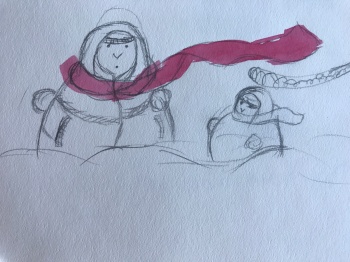
“With Scarves of red tied round their throats”
Their music has always evoked a comforting, melancholic, storied world, full of mountains, rivers and wilderness. Ethereal and moody, Robin Pecknold’s voice croons and cradles while meandering folk guitar lines move in the underline. Even as their work matured into Helplessness Blues (2011), [So now I am older than my mother and father/ When they had their daughter/ Now what does that say about me] there remains a defiant hopefulness that swells beneath each song and makes me feel warm and happy as a listener.
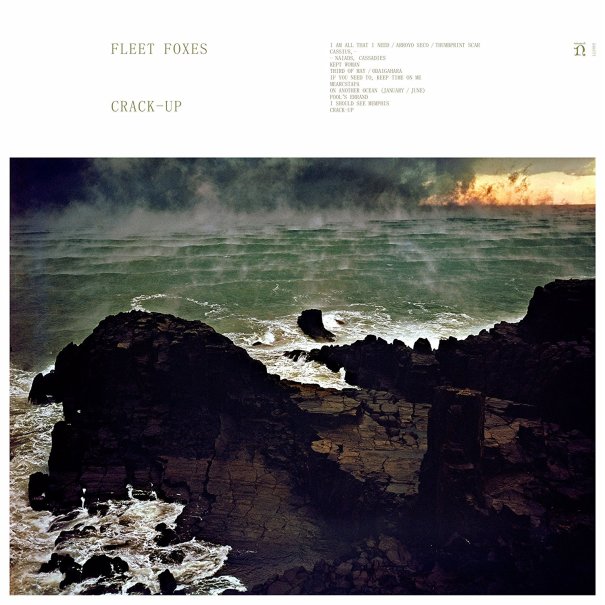
In their latest album, the Fleet Foxes take a turn that I’m watching a lot of musicians make this year. In light of a volatile and threatening social, political and global atmosphere artists have churned out some raw, dark, depressing, and soul searching stuff. You can see this in Father John Misty’s bitter but beautiful Pure Comedy (2017) and Kendrick Lamar lays out honest, mature, and cutting tracks on DAMN. The first song of Crack-Up, I am All that I need / Arroyo Seco / Thumbprint Scar, starts with a somber pace and a deep, low voice: I am all that I need/ And I’ll be till I’m through/ And I’m light on my feet/ Good to be without you. The lines flow beautifully and the dark slow phrases constantly clash with bright upbeat strains. From: And now I see that it’s all corroding/ Soonest seething, soonest folding, straight into: But the night won’t last if you just hold fast/ So calm down.
This album undeniably continues in the beautiful lyricism and harmonies that the Fleet Foxes have always been known for but it feels like it’s gone a step further, higher and deeper into darkness. The music itself feels sometimes frantic, sometimes dissonant and at others like the ocean scape on the cover: framed in clouds and colored in seething greens and dark blues verging on black, white caps crashing on indifferent rocks, the only light up off to one side, but it is, at least, a bright, golden light. The listener feels with equal insistency both “Too long now to the rising” and “Not long now to the rising” throughout the work, but is ultimately left with the last lines of the tile song, Crack-Up: All I see- / dividing tides- / Rising over me–.
— Jessica Webster
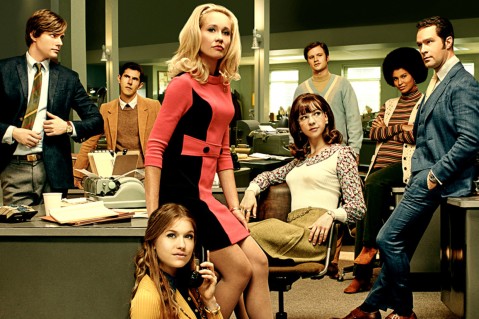
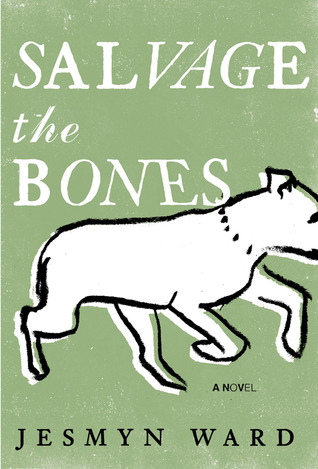 The central character and narrator, Esch, has such a believable voice. As a young girl, whose mother has died, with an alcoholic father, and three brothers, she struggles with the line between childhood and a premature, inescapable maturity. The story hovers on the brink of an impending storm mirrored by the tempestuous though seemingly minor events of the plot.
The central character and narrator, Esch, has such a believable voice. As a young girl, whose mother has died, with an alcoholic father, and three brothers, she struggles with the line between childhood and a premature, inescapable maturity. The story hovers on the brink of an impending storm mirrored by the tempestuous though seemingly minor events of the plot.
 eggs, and caring for her father when he gets sick). Her sexual experience with various boys from her community also flirts with the boundary between young adulthood and greater maturity. Esch has been forced to grow up early in many ways but she still misses her own mother and compares the ideal of motherhood with observations of China and her pups.
eggs, and caring for her father when he gets sick). Her sexual experience with various boys from her community also flirts with the boundary between young adulthood and greater maturity. Esch has been forced to grow up early in many ways but she still misses her own mother and compares the ideal of motherhood with observations of China and her pups.

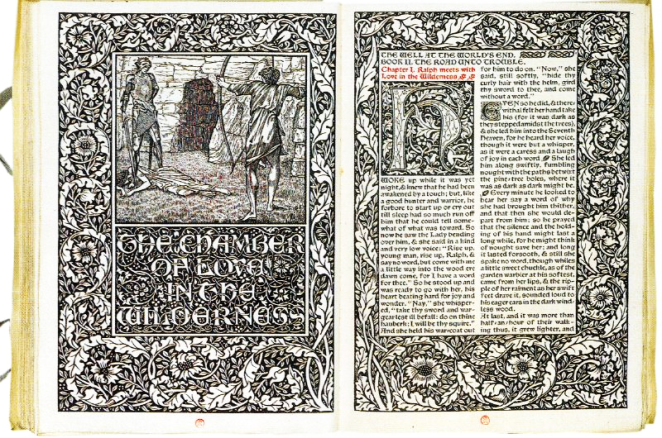
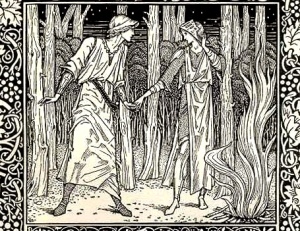 The Well at the World’s End encourages me to continue to grow and mature. Ralph’s young heart was restless, so he went out and did the things he desired. But at the end, when he has completed those tasks, his desires shift. It’s not that those desires were bad and he needed to grow up, rather they lead him to where he needs to go. As someone who’s likely in the same stage of life as Ralph, I’m inspired to go on adventures and enter worlds beyond my own “Upmeads” with the hope of coming home some-day.
The Well at the World’s End encourages me to continue to grow and mature. Ralph’s young heart was restless, so he went out and did the things he desired. But at the end, when he has completed those tasks, his desires shift. It’s not that those desires were bad and he needed to grow up, rather they lead him to where he needs to go. As someone who’s likely in the same stage of life as Ralph, I’m inspired to go on adventures and enter worlds beyond my own “Upmeads” with the hope of coming home some-day.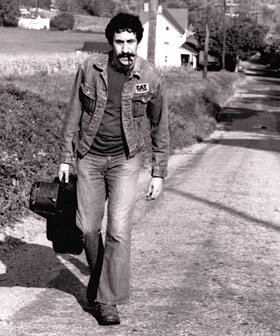 According to its release date this isn’t from 2016, but that’s when I found it. This year the
According to its release date this isn’t from 2016, but that’s when I found it. This year the